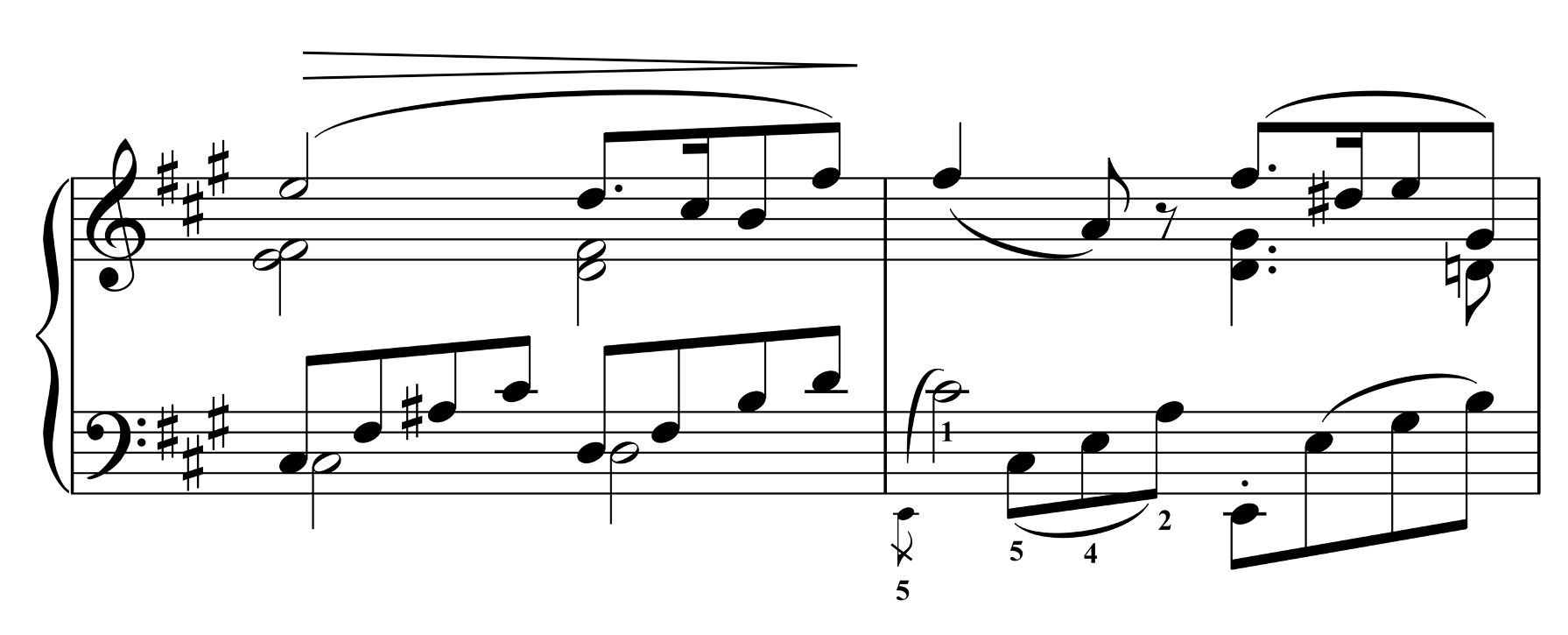“I like maintaining the pattern of alternation between the hands.”
Submitted by Michael Clark
Published on 1/12/2020

“I like maintaining the pattern of alternation between the hands.”
Submitted by Michael Clark
Published on 1/12/2020

“Taking the final notes of the arpeggio together as a sixth ensures a tidy ending.”
Submitted by Michael Clark
Published on 1/12/2020

“Splitting the notes this way can help make the staccato chords more crisp without the need of rolling them.”
Submitted by Wade Troyer
Published on 9/27/2022

“Splitting the notes this way can help make the staccato chords more crisp without the needing of rolling them.”
Submitted by Wade Troyer
Published on 9/27/2022

“Dividing between hands makes this a lot easier to play at the fast tempo this movement demands.”
Submitted by Wade Troyer
Published on 9/27/2022
Original:

Suggested performance:

“Arpeggiating the 11th in the right hand in m. 19 causes a break in the melody for most hands. Treating the bass E as a grace note and catching it in the pedal allows the melody to remain legato with no pedal blurring.”
Submitted by Michael Clark
Published on 1/1/2020

“Taking the first group of triplets in the right hand facilitates the position shift.”
Submitted by Michael Clark with thanks to Nancy Weems
Published on 1/1/2020

“Taking the third triplet into the right hand avoids awkward crowding.”
Submitted by Michael Clark
Published 1/1/2020

“Assimilating the treble E into the left-hand chord allows the right hand to prepare for a graceful delivery of the next gesture.”
Submitted by Michael Clark with thanks to Nancy Weems
Published on 1/1/2020

“It’s an uncomfortable stretch for me to play the top line legato while keeping the inner voices in the right hand.”
Submitted by Michael Clark
Published on 1/1/2020

“I find this passage awkward with the left-hand alone. A little right-hand assistance allows for a smooth delivery.”
Submitted by Michael Clark
Published on 1/1/2020

“Taking these few notes in the left hand avoids any shifts or finger crossing in the right hand, allowing for a more graceful start to the scale.”
Submitted by Michael Clark with thanks to Nancy Weems
Published on 1/1/2020

“The D can be easily taken into the right hand if the stretch of a tenth is uncomfortable or awkward.”
Submitted by Michael Clark with thanks to Nancy Weems
Published on 1/1/2020

“If the stretch is uncomfortable in the right hand, the bottom line of the treble staff can be taken in the left hand.”
Submitted by Michael Clark
Published on 1/1/2020

“I have greater control over the voicing with this fingering.”
Submitted by Michael Clark with thanks to Nancy Weems
Published on 1/1/2020

“This redistribution is the feasible way to play this passage for most hand sizes.”
Submitted by Michael Clark
Published on 1/1/2020

“This redistribution requires few position shifts.”
Submitted by Michael Clark with thanks to Nancy Weems
Published on 1/1/2020

“Starting the scale with a left-hand octave is more secure.”
Submitted by Michael Clark
Published on 1/1/2020